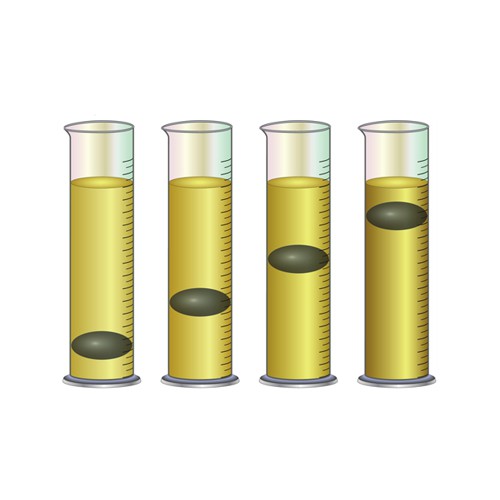Motor Viscosity Grades Explained

Motor oils as we know them today have evolved considerably since their first inception over 100 years ago. Classifying different types of oil has always existed, either in terms of performance or viscosity.
A Brief History of the Classification System
The first known tables for viscosity classification were available in 1911, categorised with a series of numbers determined by the oils flow time through a cup. This classification was used to denote a 10, 20, 30, 40 and therefore was the forerunner of todays classification systems. As with all systems the classification system evolved and by 1959 it became known as ‘SAE J300′.
By 1967, it was evident that the classification method was too simple and Cold Cranking viscosity was introduced to monitor viscosity at low temperatures. In 1972 the system became metric using Celsius and viscosity measurements in cSt with the addition of a pumpability test in 1978, due to concerns over solidification and nil flow when cold. During the eighties’ in the US, the now infamous Winters in Sioux falls tested the classification system leading to improvements within the measurement of cold temperatures, particularly the cooling rates and the formation of waxes.
In 1992, High Temperature High Shear (HTHS) finally found its way into the chart as a more accurate measure of the conditions and temperatures found within engines. SAE J300 is constantly evolving with additional viscosity grades and there’s no doubt that the future will introduce increasingly refined classification systems.
Understanding Monograde Engine Oils
Monograde engine oils are only denoted by a single number, i.e. SAE 40. These oils find application in many areas, from Vintage and Classic engines to lawn mowers and gearboxes. With monograde oils there is no requirement for cold temperature testing and therefore there is not W number stated. Monograde engine oils are still defined by SAE J300 but only the lower half of the table applies.
Understanding Multigrade Engine Oils
If written down, the possible combinations of multigrade engine would form a very large list. Everything from 0W-8 to 25W-60, meaning that OEM’s have a list of possibilities to ensure that not only does the engine oil perform in ‘moderate’ temperature climates, but also in Artic and Desert terrains. A typical OEM would produce a document list of lubricant possibilities such as the following for a specific engine:
-20 to 40SAE 10W-30
Above -15SAE 15W-40
Above -10SAE 20W-40
Below 10SAE 5W-30
From 0 to 40SAE 30
Example: Understanding the Current Classification System
If we look at a typical viscosity grade such as 15W-40; it can be broken down as follows:
15 W 40
- It’s a multigrade oil quoting both high and low temperature limits.
- It’s an SAE 40
- It has low temperature properties, denoted as 15W (W referred to as Winter)
15 tells us the oil has been tested at -20°C for cold cranking viscosity and -25°C for pumpability. This means oil will flow lubricating the engine on initial start-up in climates where a 15W oil has been recommended by the OEM (Original Engine Manufacturer).
SAE 40 tells us the oil has a viscosity at 100°C between 12.5 – 16.3 and an HTHS viscosity above 3.7.
It’s worth noting these figures do not relate to any kind of performance and indeed an engine oil with no additives can be an SAE 15W-40. Included at the end of this document is a SAE J300 table, containing all of the limits for engine oil viscosities.
Summary
SAE J300 is a constantly evolving document considering advances in testing and technology. Lubricants are becoming ever thinner to meet modern engine requirements and no doubt will look very different in 10 years time.
SAE J300 – 2015
|
SAE Grade |
Cold Cranking Max Viscosity cP °C |
Pumpability Max Viscosity cP °C |
Viscosity @ 100°C |
HTHS @ 150°C Min cP |
|
|
Min cSt |
Max cSt |
||||
|
0W |
6200 @ -35 |
60000 @ -40 |
3.8 |
– |
– |
|
5W |
6600@ -30 |
60000 @ -35 |
3.8 |
– |
– |
| < |
7000 @ -25 |
60000 @ -30 |
4.1 |
– |
– |
|
15W |
7000 @ -20 |
60000 @ -25 |
5.6 |
– |
– |
|
20W |
9500 @ -15 |
60000 @ -20 |
5.6 |
– |
– |
|
25W |
13000 @ -10 |
60000 @ -15 |
9.3 |
– |
– |
|
8 |
– |
– |
4.0 |
6.1 |
1.7 |
|
12 |
– |
– |
5.0 |
7.1 |
2.0 |
|
16 |
– |
– |
6.1 |
8.2 |
2.3 |
|
20 |
– |
– |
6.9 |
9.3 |
2.6 |
|
30 |
– |
– |
9.3 |
12.5 |
2.9 |
|
40 |
– |
– |
12.5 |
16.3 |
3.5 (0W 5W 10W) |
|
40 |
– |
– |
12.5 |
16.3 |
3.7 |
|
50 |
– |
– |
16.3 |
21.9 |
3.7 |
|
60 |
– |
– |
21.9 |
26.1 |
3.7 |

